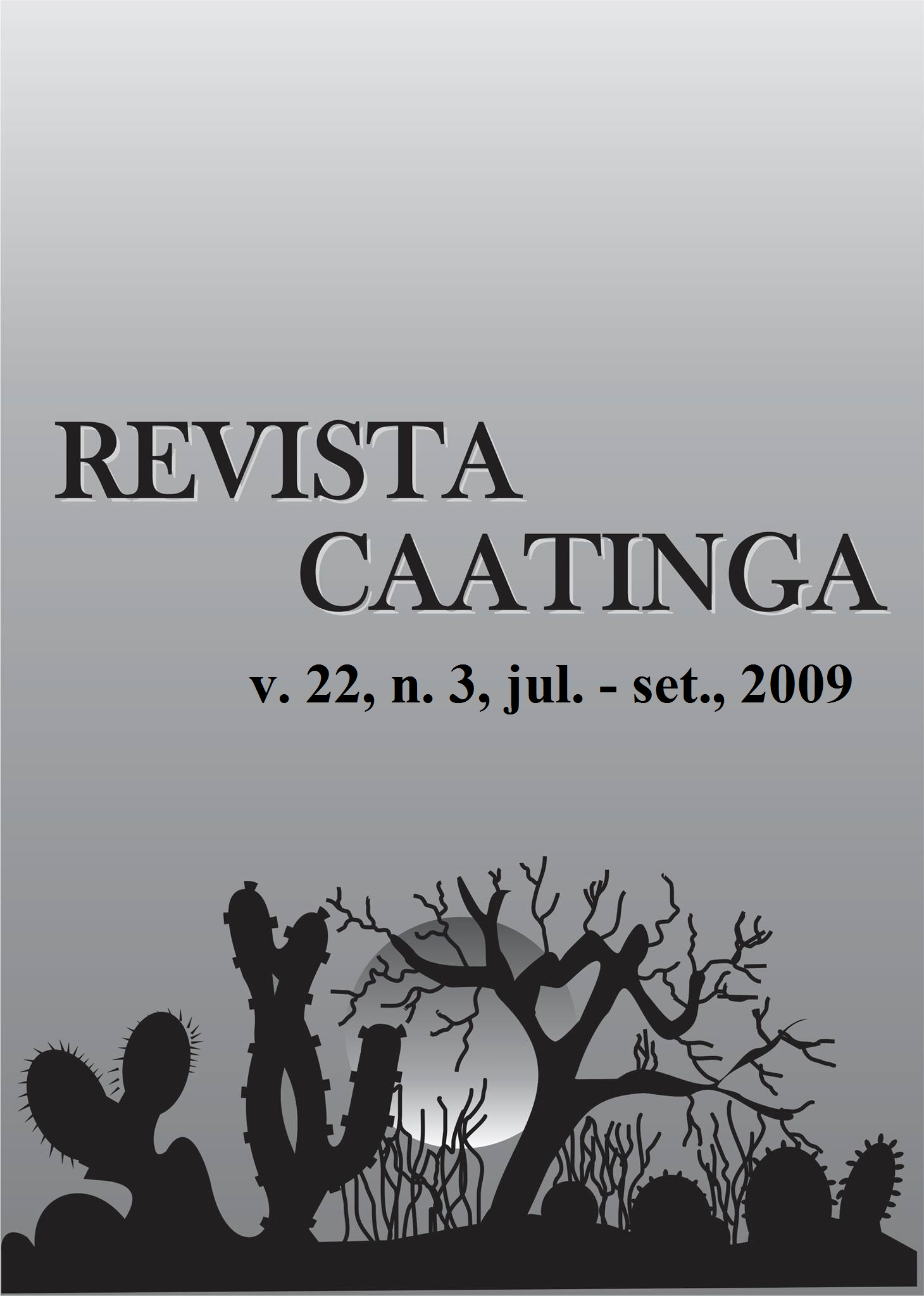MANGABEIRA SEEDLING MINERAL NUTRITION CULTIVATED IN SUBSTRATES CONTAINING COCONUT FIBER AND FERTILIZED WITH PHOSPHORUS
Palavras-chave:
Hancornia speciosa, mineral composition, organic residuesResumo
This research had as objective to evaluate the substrate components effect in different mixtures fertilized with phosphorus on mangabeira seedlings mineral composition. This experiment was carried out in the Centro de Ciências Agrárias, UFPB, situated in the municipal district of Areia-PB. The experimental design was in randomized blocks, with 17 treatments and three replications, being utilized four seedling per experimental unit. The treatments, composed by coconut fiber with concentrations from 0 to 40 %, bovine manure from 0 to 25.5 %, soil from 25 to 70 %, 15 % of sand and triple super phosphate, with doses of 0.0, 5.5 and 11.0 g dm-3, were conditioned in black polyethylene bags. The macronutrients and copper contents from root system and aerial part of the seedlings were evaluated 150 days after seeds germination. The addition of bovine manure and triple super phosphate increased the macronutrients content in the root system and in the aerial part of mangabeira seedlings. The soil and coconut fiber addition resulted in contrary effects. Copper content in the aerial part of the seedlings increased with the increment of soil and coconut fiber concentration in the substrate. The substrate containing 24 % of manure, 51 % of soil, 10 % of coconut fiber, 15 % of sand and 8 g dm-3 of triple super phosphate is recommended to obtain the bigger macronutrients and copper contents in the root system and in mangabeira seedlings aerial part.Downloads
Downloads
Publicado
Edição
Seção
Licença
Os Autores que publicam na Revista Caatinga concordam com os seguintes termos:
a) Os Autores mantêm os direitos autorais e concedem à revista o direito de primeira publicação, com o trabalho simultaneamente licenciado sob a Licença Creative Commons do tipo atribuição CC-BY, para todo o conteúdo do periódico, exceto onde estiver identificado, que permite o compartilhamento do trabalho com reconhecimento da autoria e publicação inicial nesta revista, sem fins comerciais.
b) Os Autores têm autorização para distribuição não-exclusiva da versão do trabalho publicada nesta revista (ex.: publicar em repositório institucional ou como capítulo de livro), com reconhecimento de autoria e publicação inicial nesta revista.
c) Os Autores têm permissão e são estimulados a publicar e distribuir seu trabalho online (ex.: em repositórios institucionais ou na sua página pessoal) a qualquer ponto antes ou durante o processo editorial, já que isso pode gerar alterações produtivas, bem como aumentar o impacto e a citação do trabalho publicado (Veja O Efeito do Acesso Livre).







